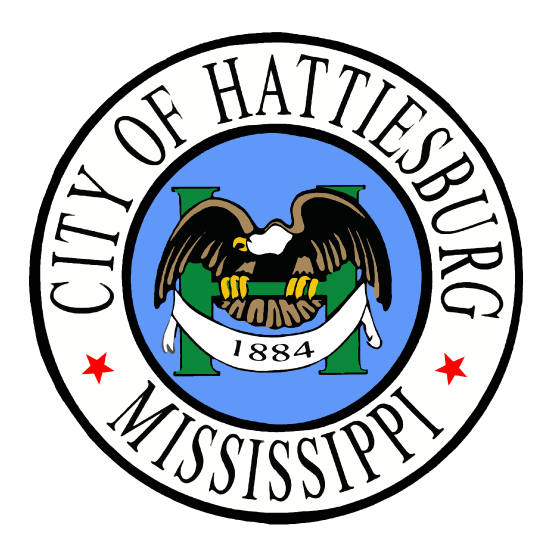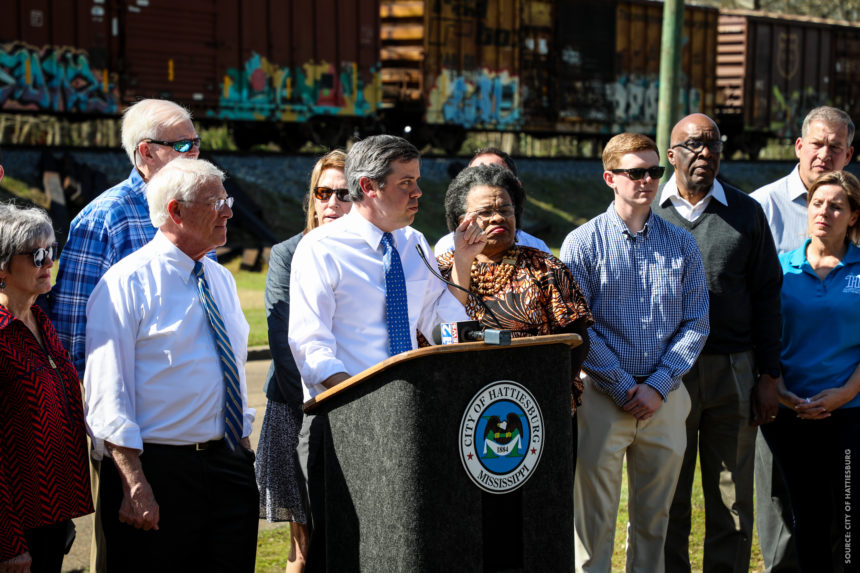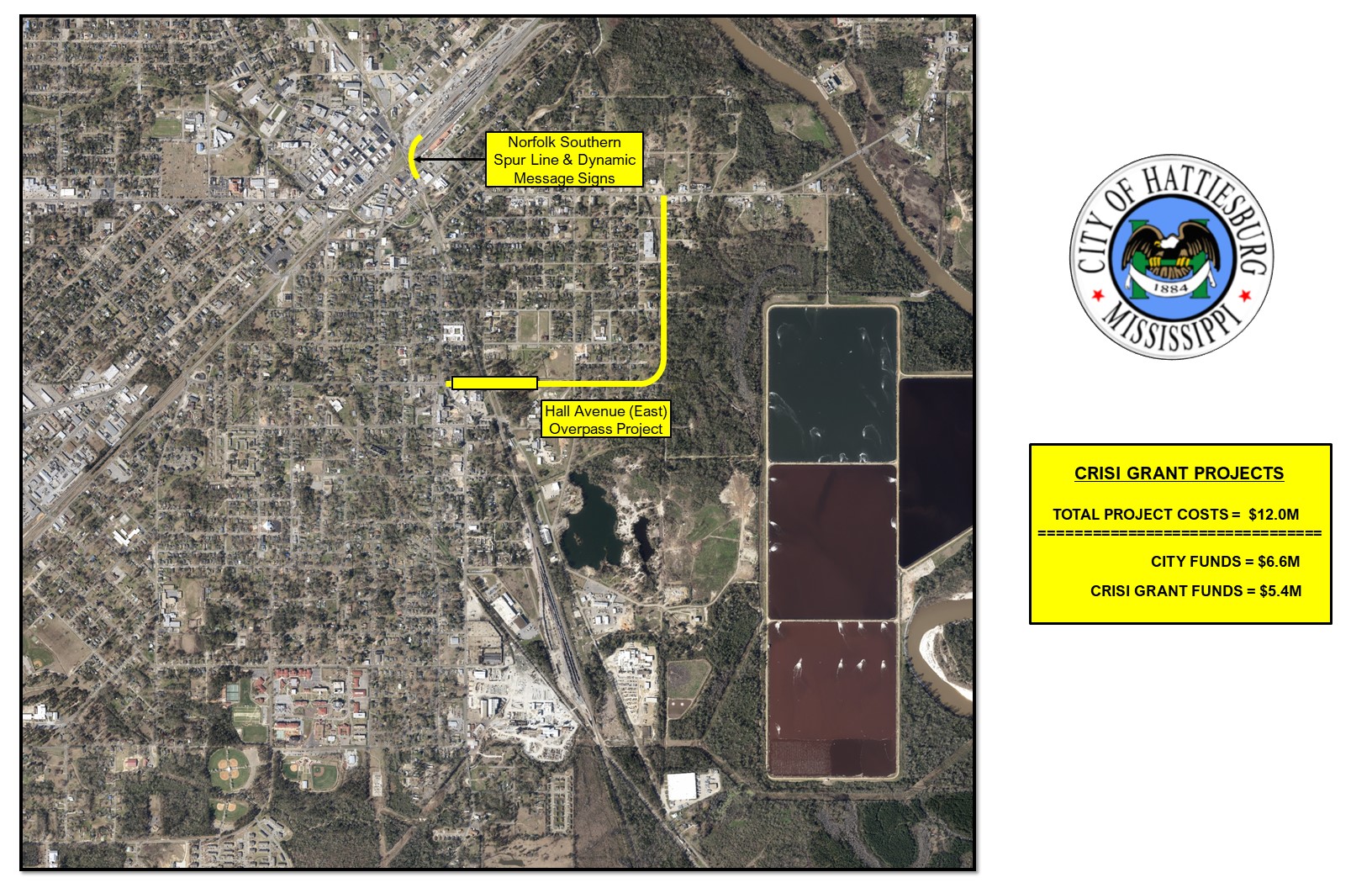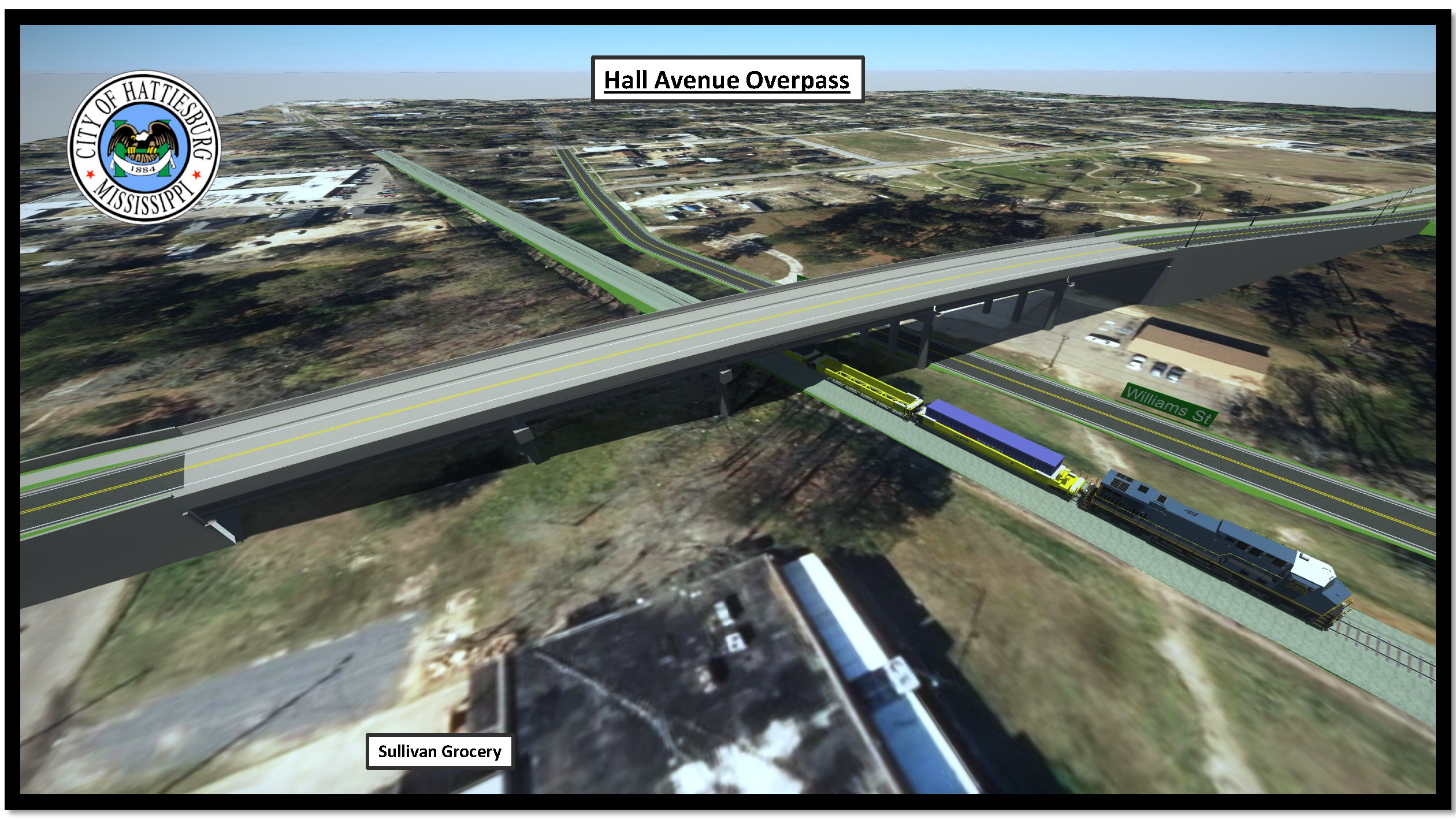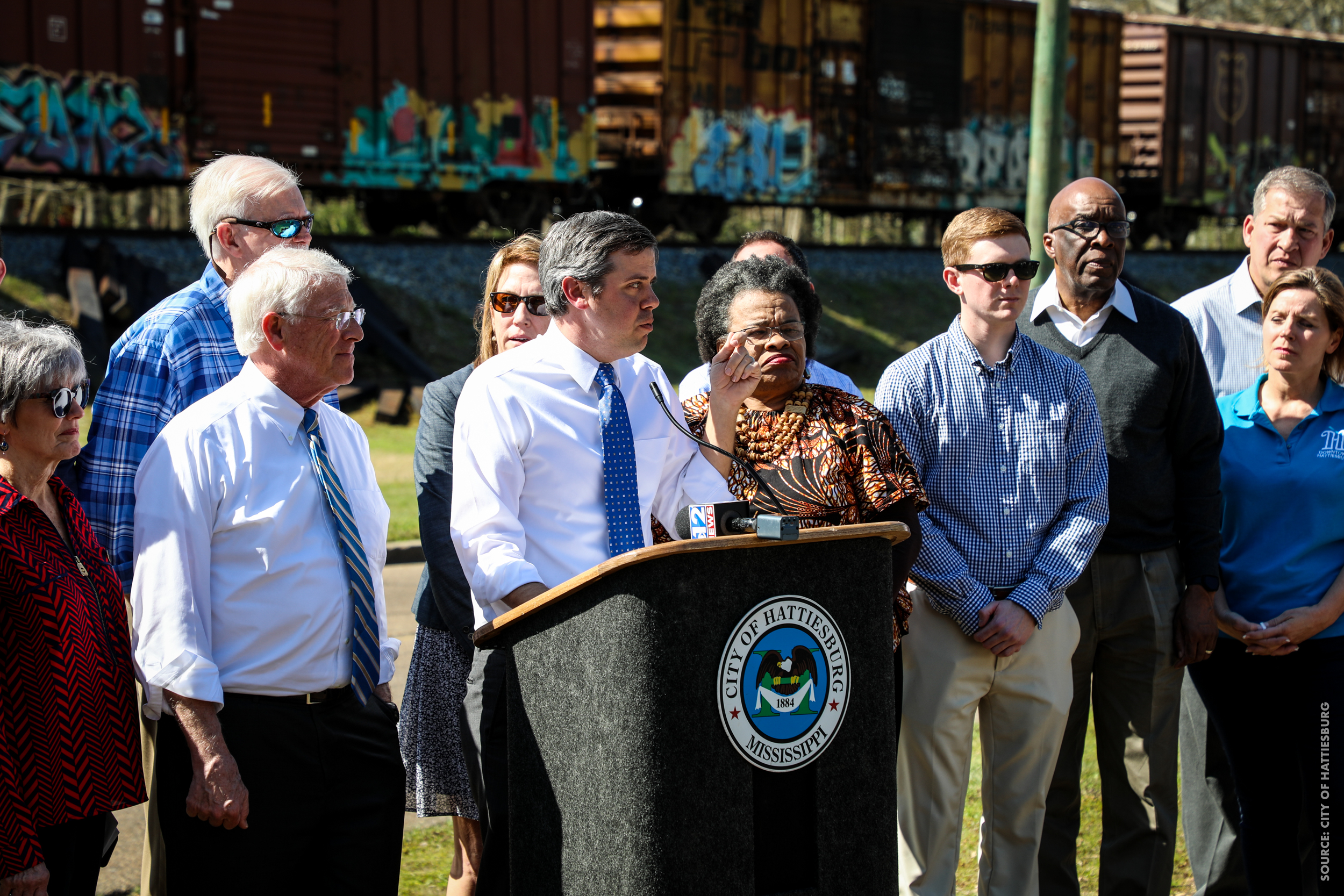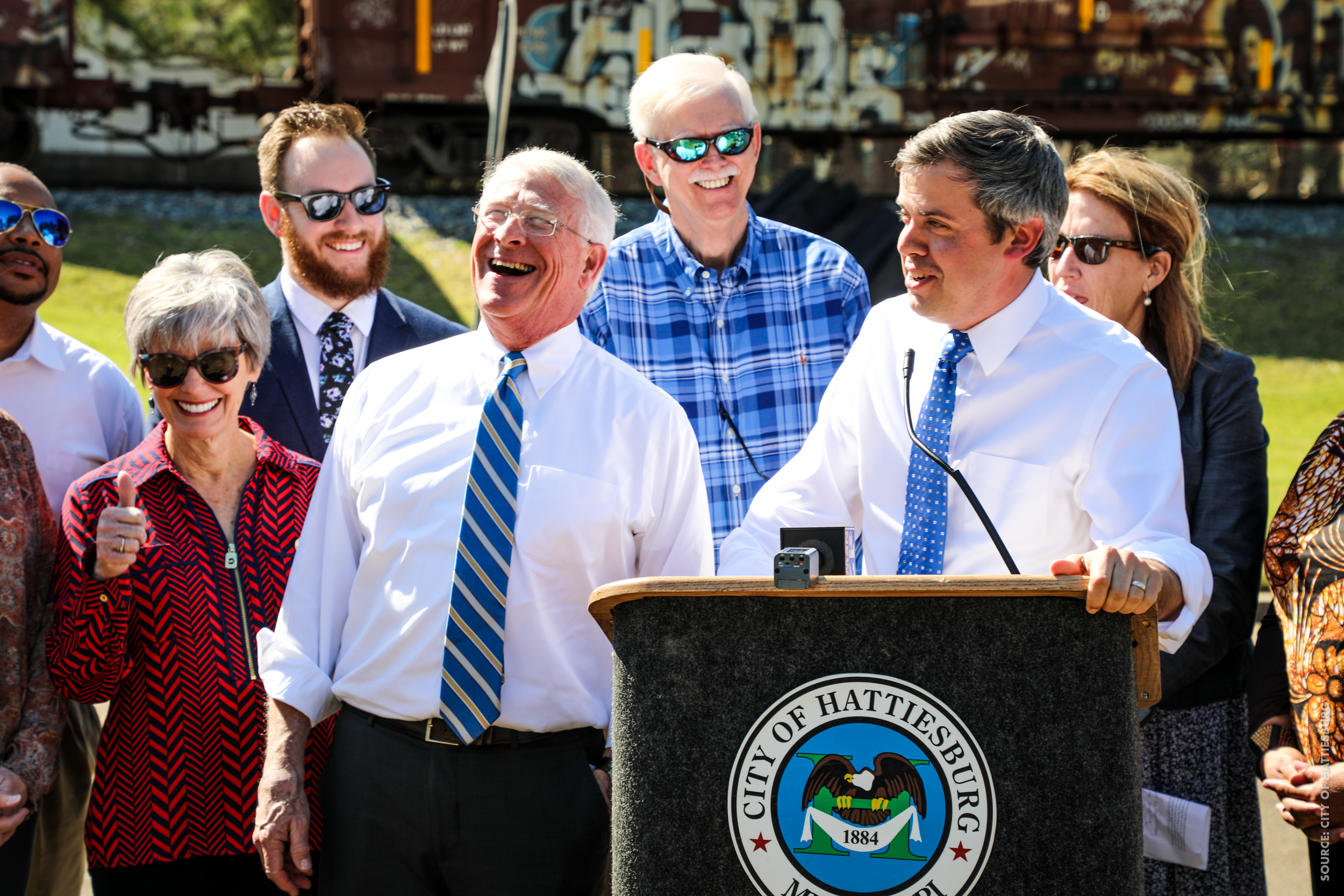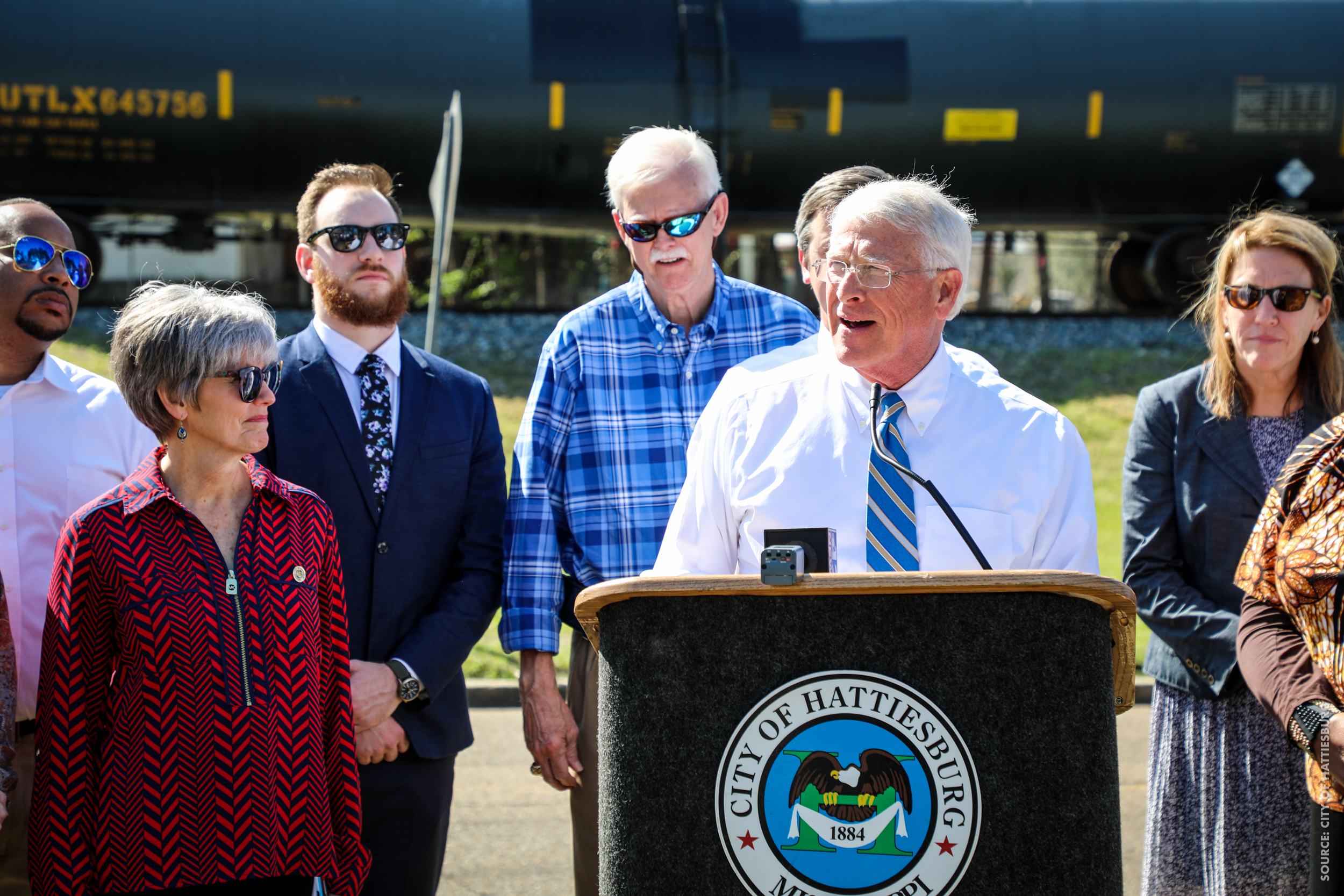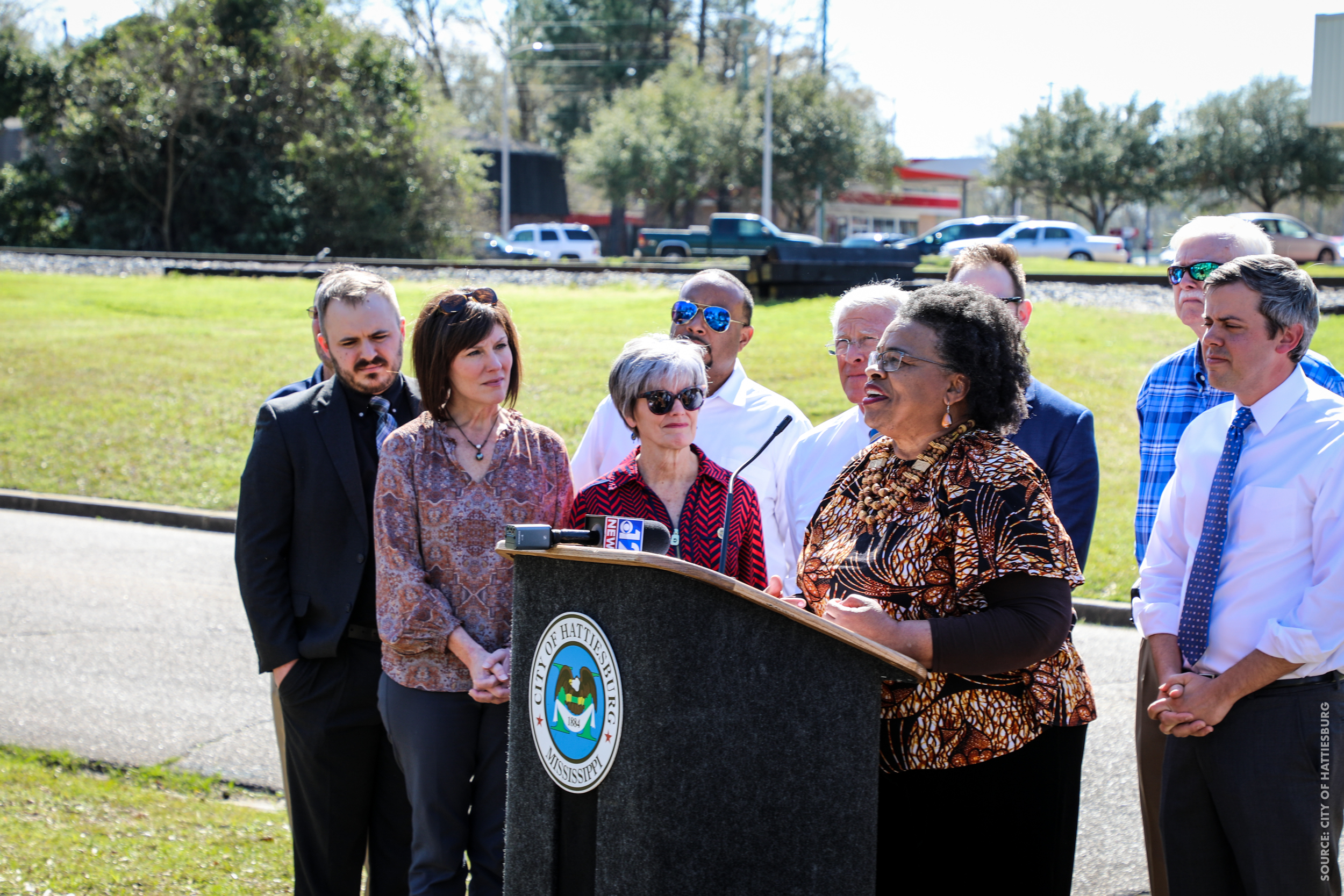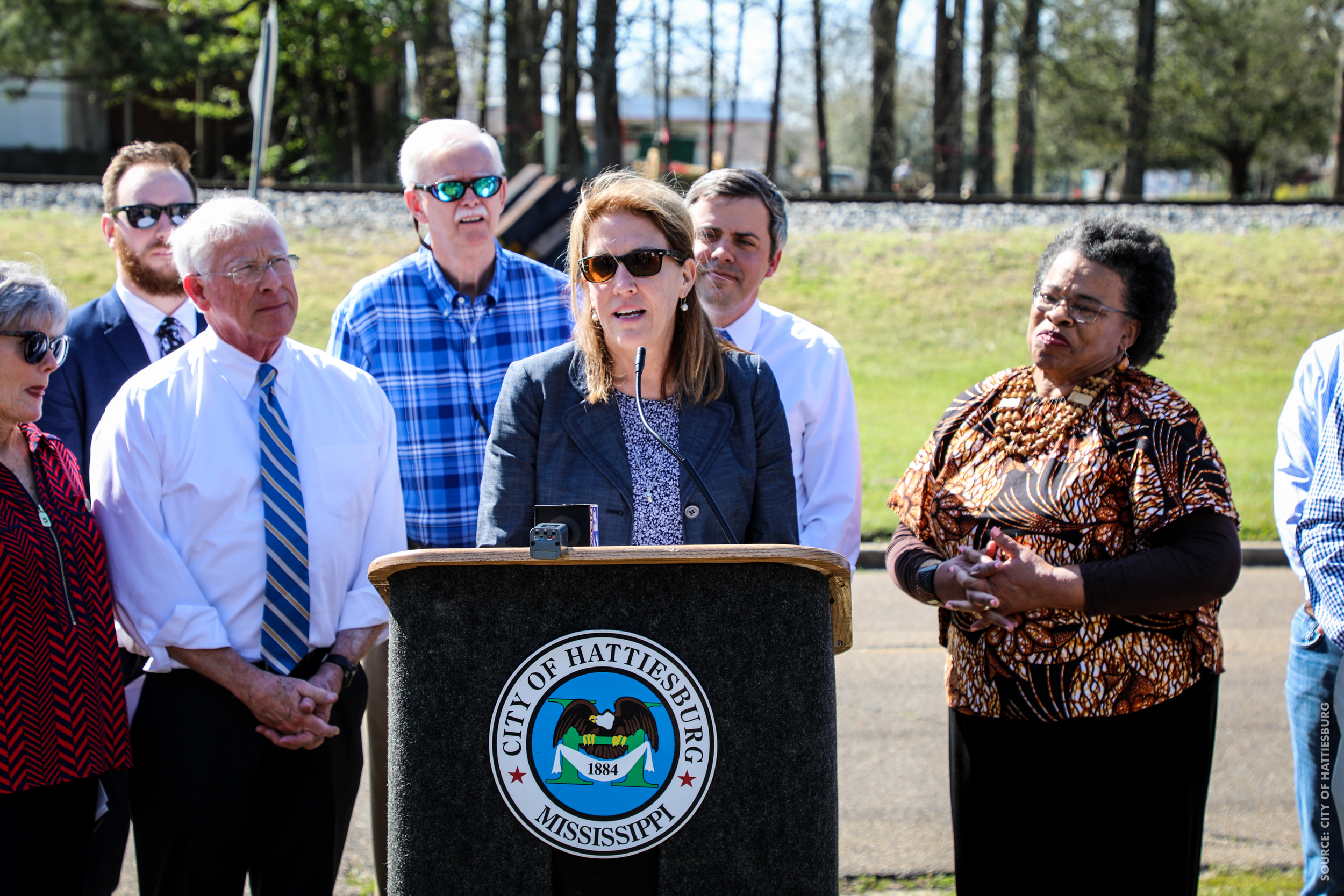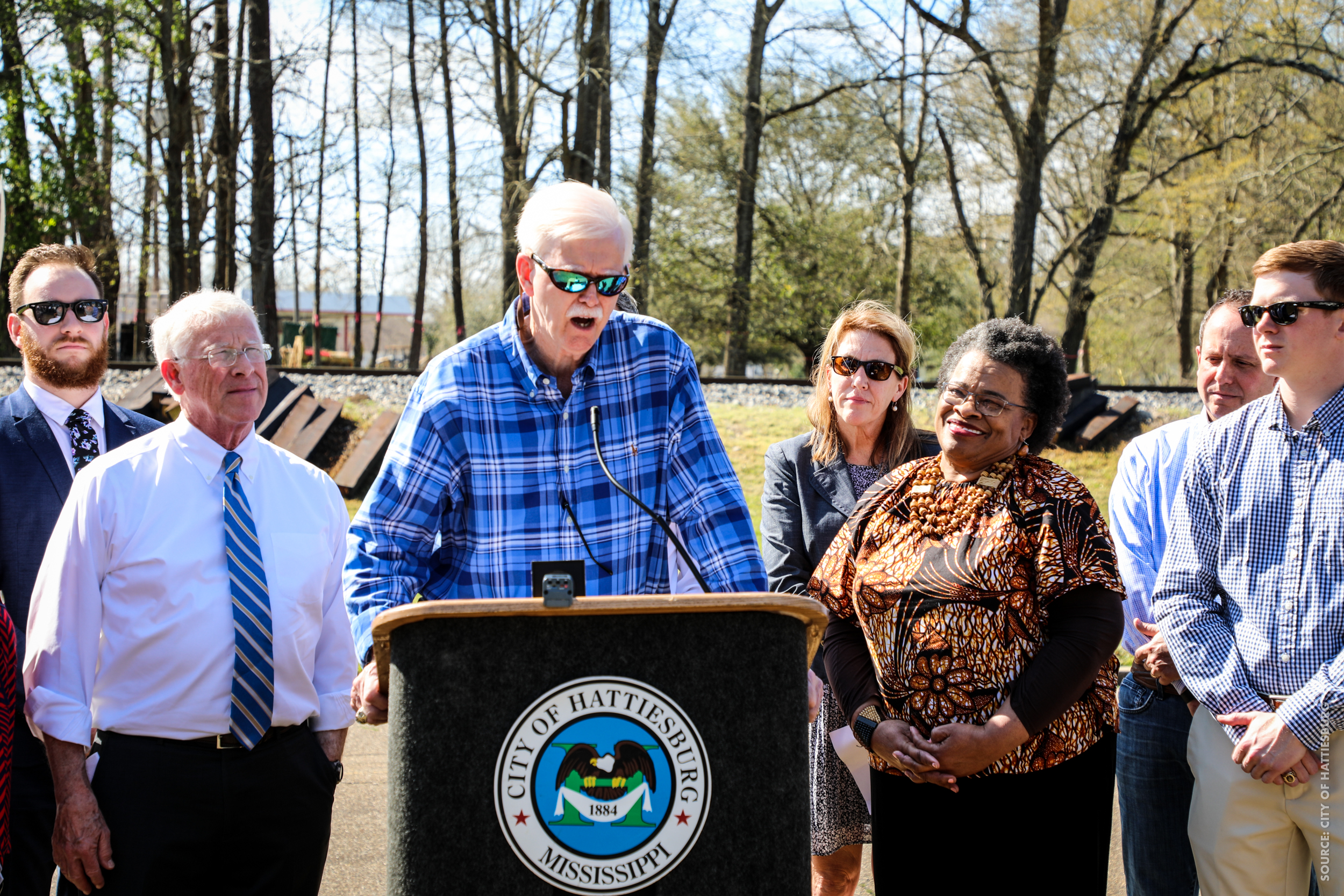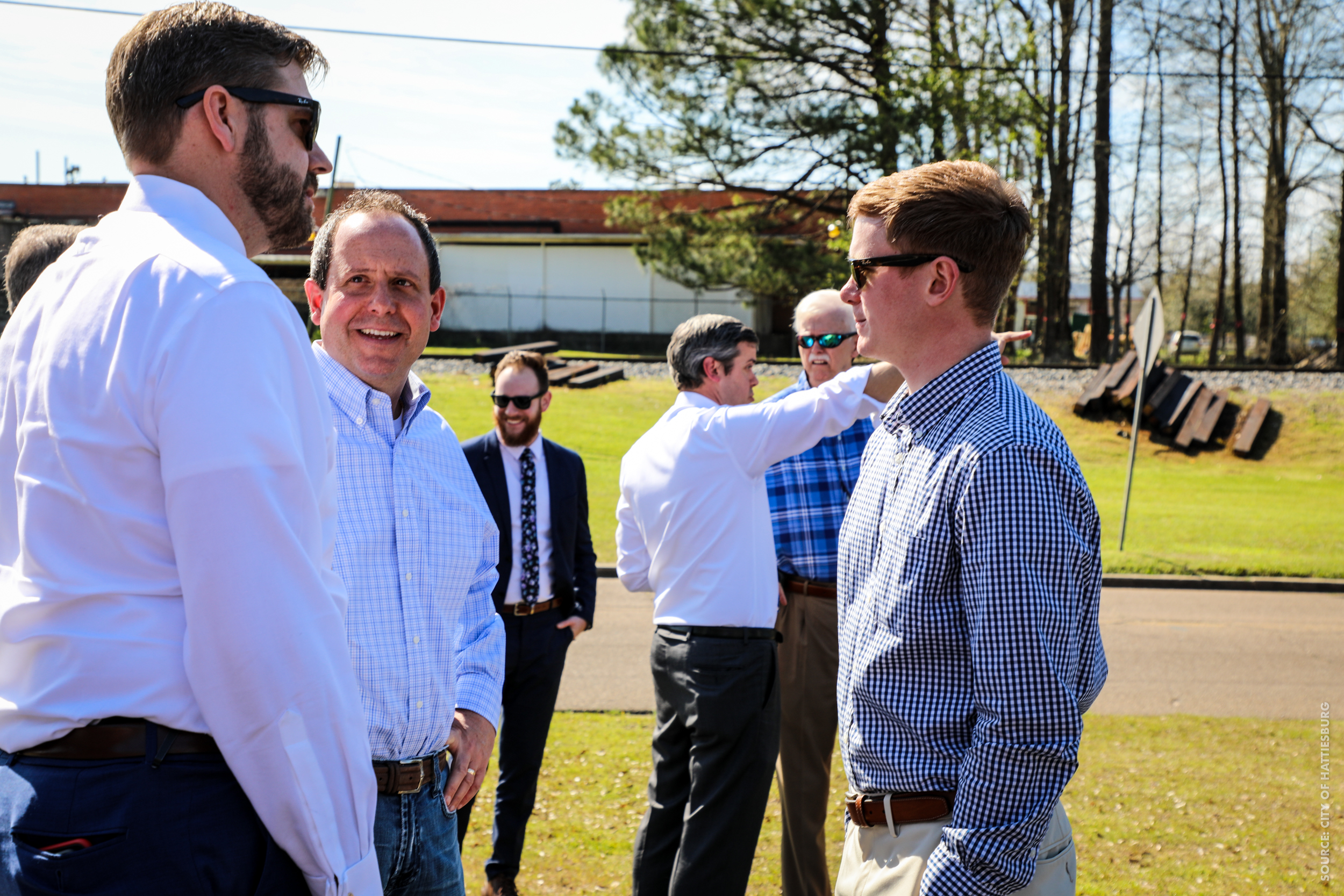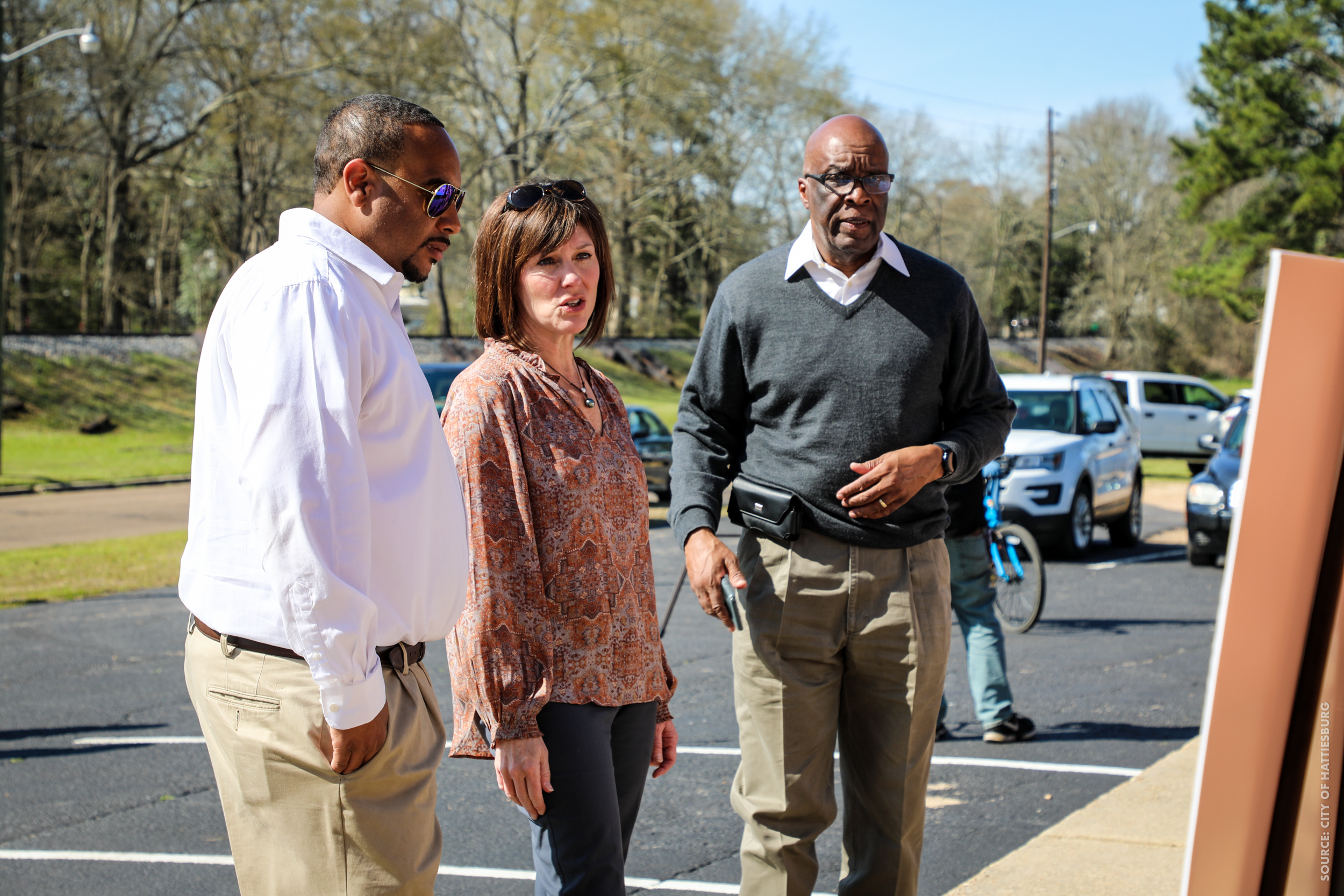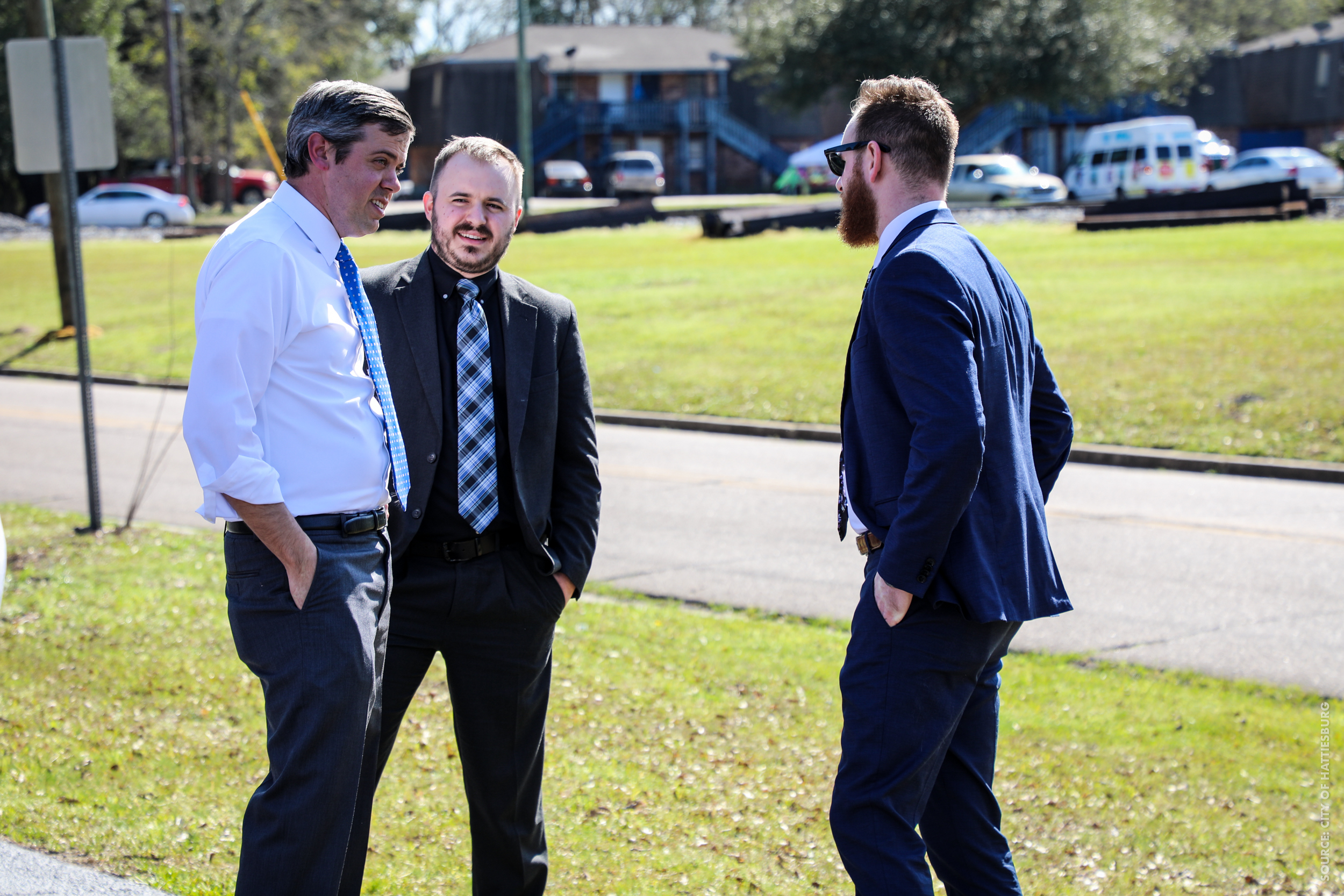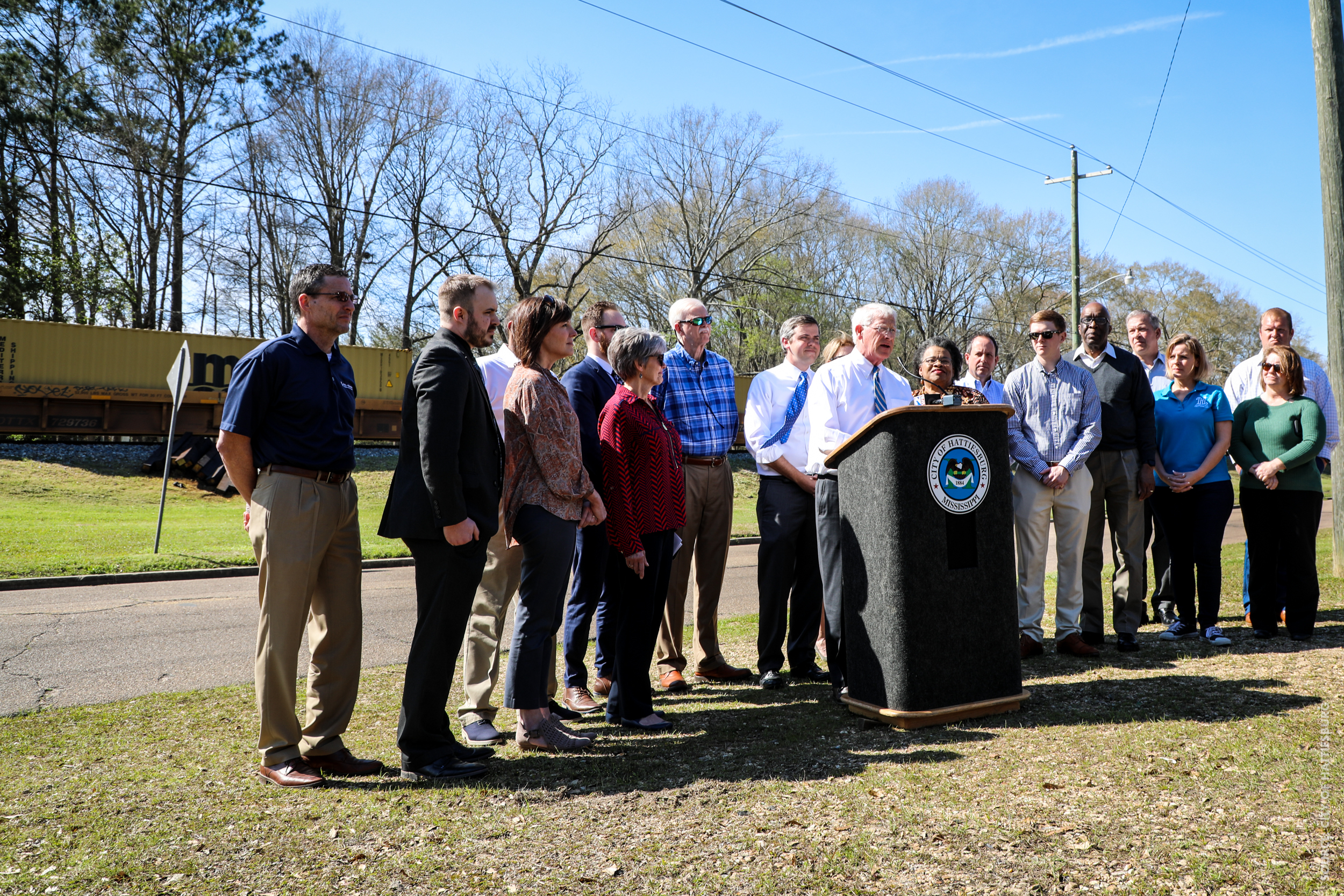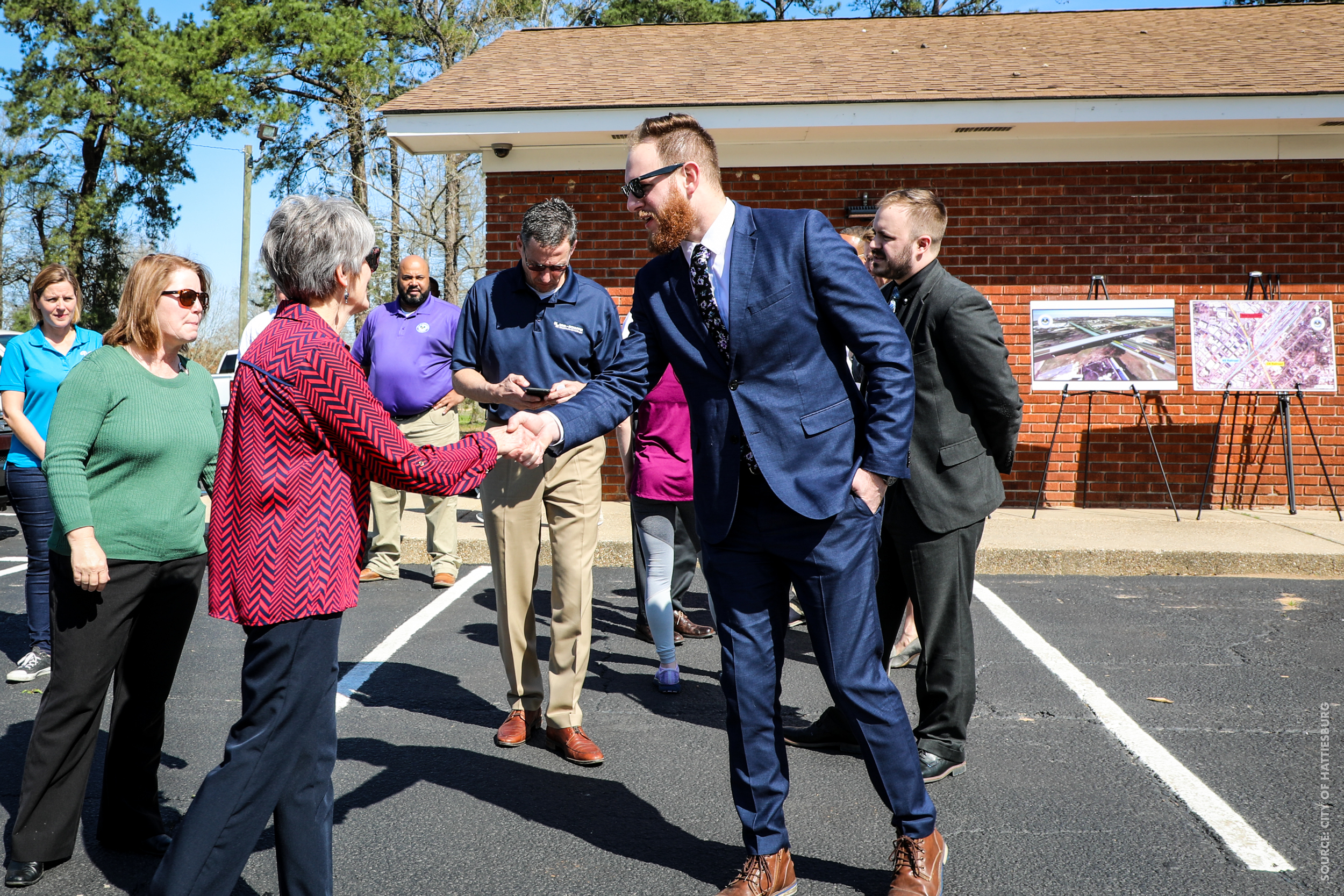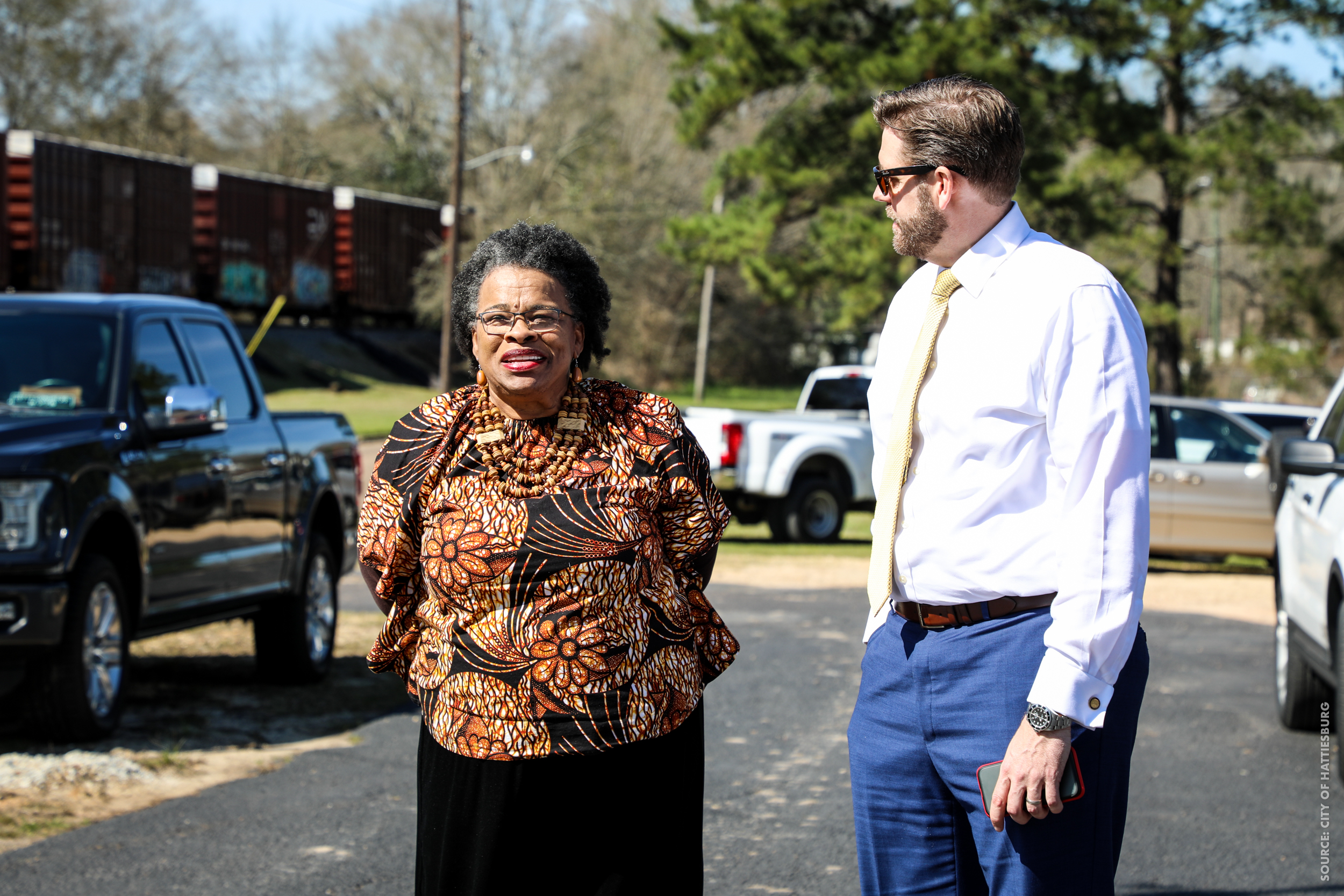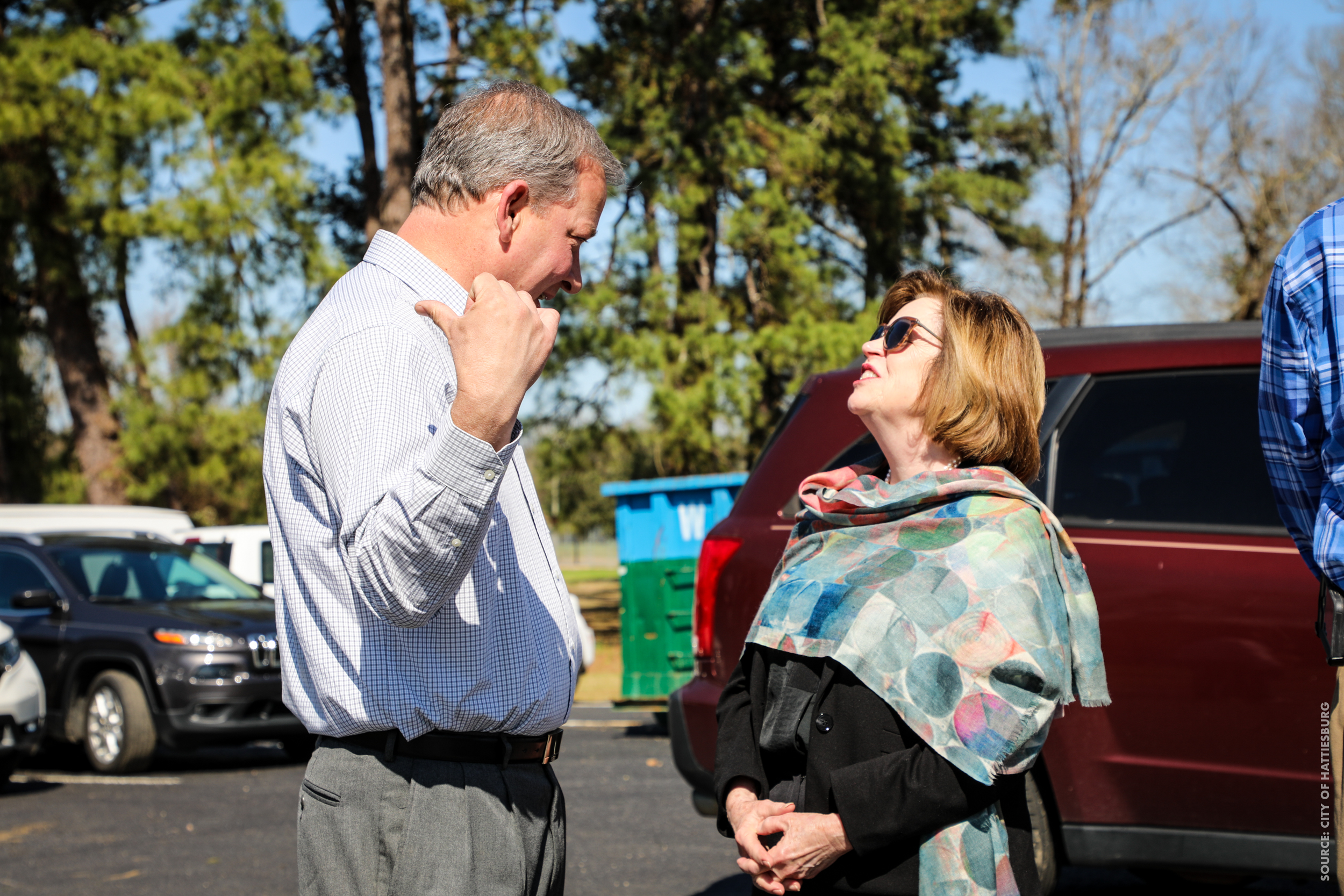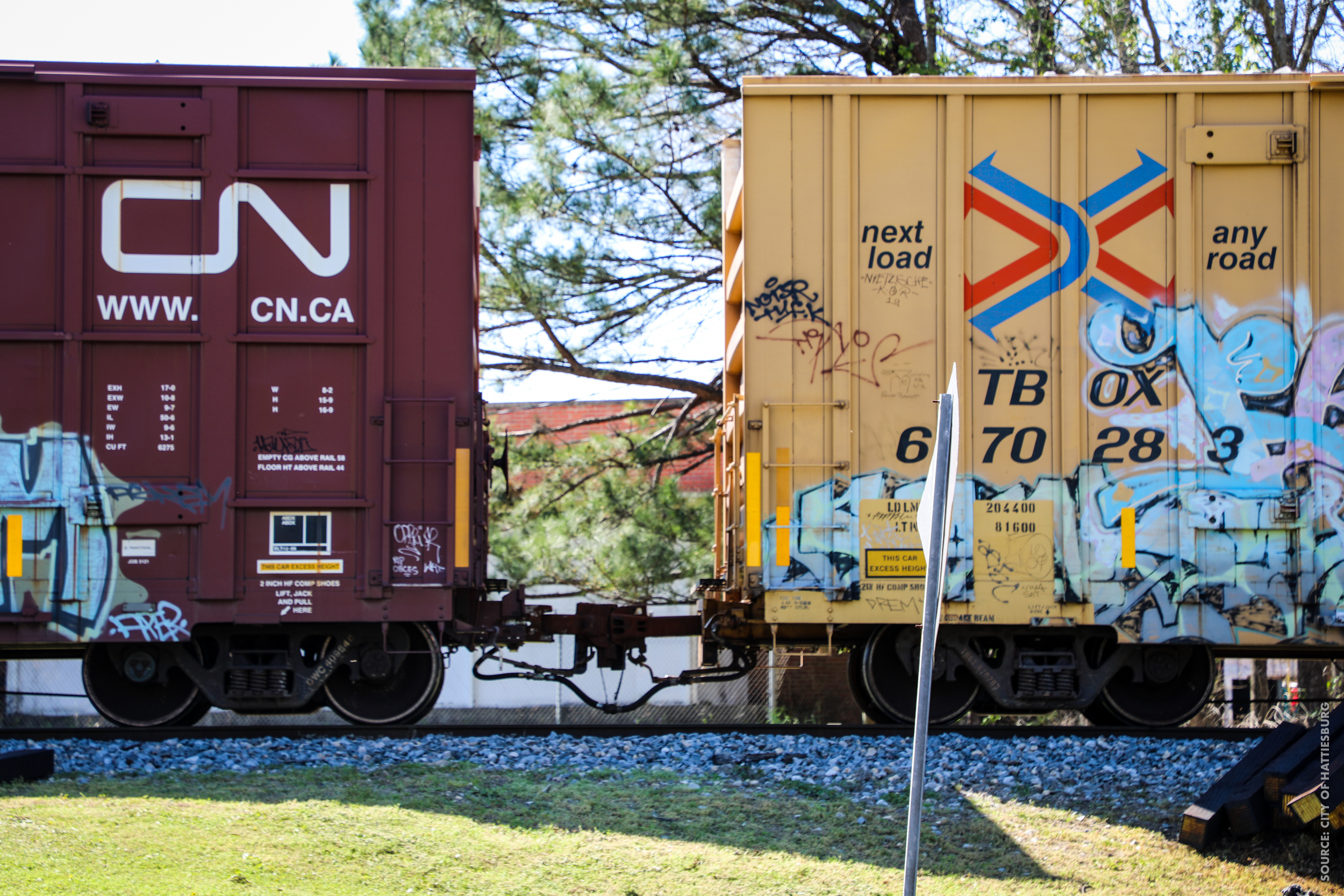Hattiesburg, Mississippi – On Saturday afternoon, Mayor Toby Barker was joined by U.S. Senator Roger Wicker, Michele Gargiulo – District Director for Congressman Steven Palazzo, members from Hattiesburg City Council as well as local and statewide officials to discuss Hattiesburg’s recent award of $5.39 million in funding from the Department of Transportation to solve one of the city’s biggest transportation issues – blocked railroad crossings.
Comprehensively, the solution includes an extension of Hall Avenue in the form of an overpass for the Canadian National line, an additional spur for quicker transfers in the rail yard and a dynamic, digital messaging system to alert motorists for when a crossing is blocked.
The grant funding, which comes from the Consolidated Rail Infrastructure and Safety Improvements (CRISI) program, will play a vital role in making that happen.
“$5.39 million is one of the largest federal grants in recent Hattiesburg history, but it’s more than the dollar amount,” said Barker. “The real appreciation is knowing that we are taking the first real tangible step in solving a longstanding challenge for our city’s thriving downtown.”
Barker added, “While the railroads have been a source of economic progress for our city – and have helped create our identity as the Hub City – the locations of the lines cause a problem that is unique to Hattiesburg.”
Within the footprint of Downtown Hattiesburg, there are 22 “at-grade” rail crossings without alternate paths if they are blocked. Additionally, the Hub City is home to a switching yard for a three-point turn system for two national rail lines – Canadian National and Norfolk Southern. This often results in multiple 20+ minute delays throughout the business day, every day.
These issues have posed a traffic problem for some time, but officials also note that a more critical issue involves the delivery of public safety services. As is, emergency response to the citizens of Hattiesburg – from ambulance and fire support to the city’s police force – is hindered when a train is on the track and blocking a crossing.
Hattiesburg is currently building a $30 million public safety complex on Hall Avenue. Without this solution, officers will have a problem getting from the police station to a neighborhood that’s less than a quarter of a mile away if a train is stuck on the track.
An overpass, a new spur in the railyard and dynamic message signs will all provide for getting through these obstacles.
Since 2018, the City of Hattiesburg has put forth several grant applications to pay for these solutions – which included two different BUILD grants through the Department of Transition. The most recent application was not awarded, but congressional aides and staff members recommended the Hattiesburg go after a CRISI grant.
While a smaller pot of money, the support from a variety of partners and representatives for the city’s application was a driving force in helping get it awarded.
Barker added that this effort would have been for naught without a great team at the local, state and federal levels to push it through – including Hattiesburg’s congressional delegation.
“We’re thrilled so many railroads want to go through Hattiesburg,” said Wicker. “But the irony of having a lot of rail transportation is that while bringing more economic activity, it has also hindered economic activity. These upgrades will improve safety and reduce frustrations as the city works to make Hattiesburg a better place to live and work.”
Palazzo, who had a previously scheduled engagement, provided a statement by way of Gargiulo. It stated, “I am grateful to have played a part in supporting this grant that will reform downtown Hattiesburg. I’ve been stuck in traffic leaving our Hattiesburg office due to congestion from a train on the track in Downtown and I think you’ll find several folks who have also experienced similar delays. The vision was to reduce the length and frequency of delays and that’s going to happen.”
While the grant funding has been awarded, residents can expect the design phase for this project to last through the end of the year with the hope to break ground by 2021.
In total, the project will cost $11.9 million – the grant will provide for $5.39 million and the city will match its share of $6.59 million.
Barker added, “While an investment, we know it will go a long way in alleviating commuter frustration and make our city safer through bridging divides and building more prosperous opportunities for our city’s neighborhoods.”
##

